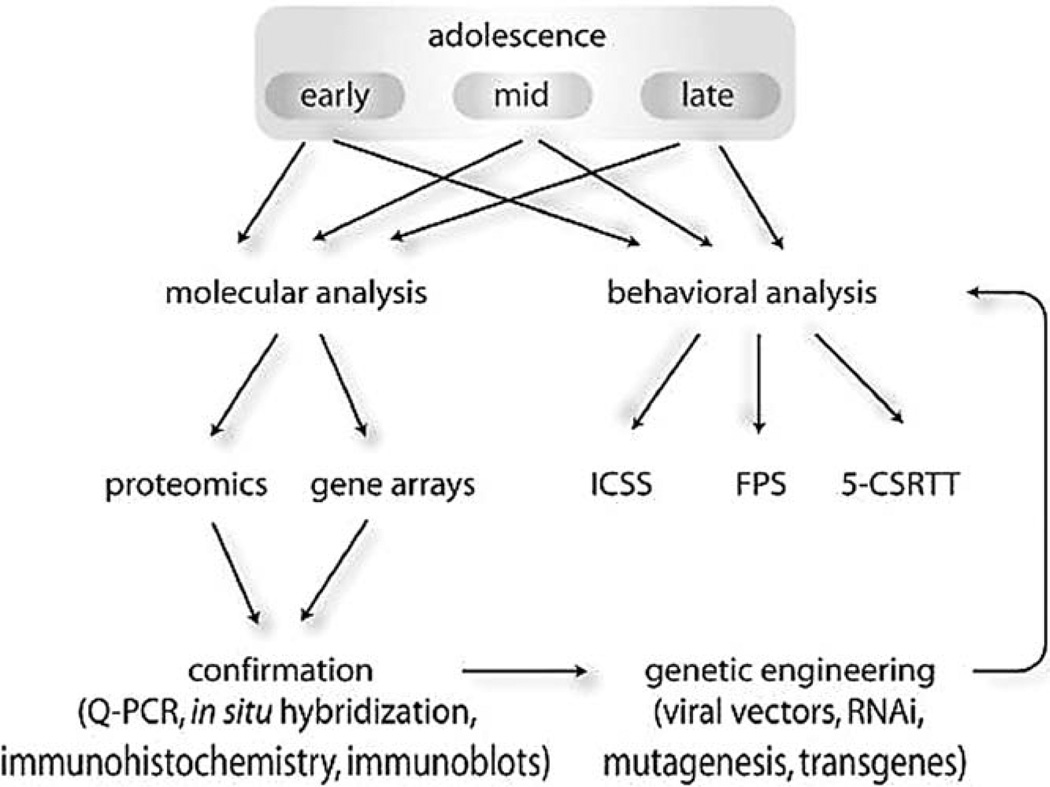Fig. 4.
Schematic description of one strategy to establish causal relationships between psychotropic drug exposure-induced alterations in molecular biology and alterations in behavior. Ideally, molecular and behavioral analyses initially proceed in parallel, and involve drug exposure at different periods of brain development (e.g., early, mid, and late adolescence). When exposure-related molecular adaptations are identified, genetic engineering techniques can be used to mimic such changes to explore whether any particular adaptation is sufficient to cause alterations in motivation (e.g., using ICSS), learning (e.g., using FPS), or attention (e.g., using 5CSRTT).

